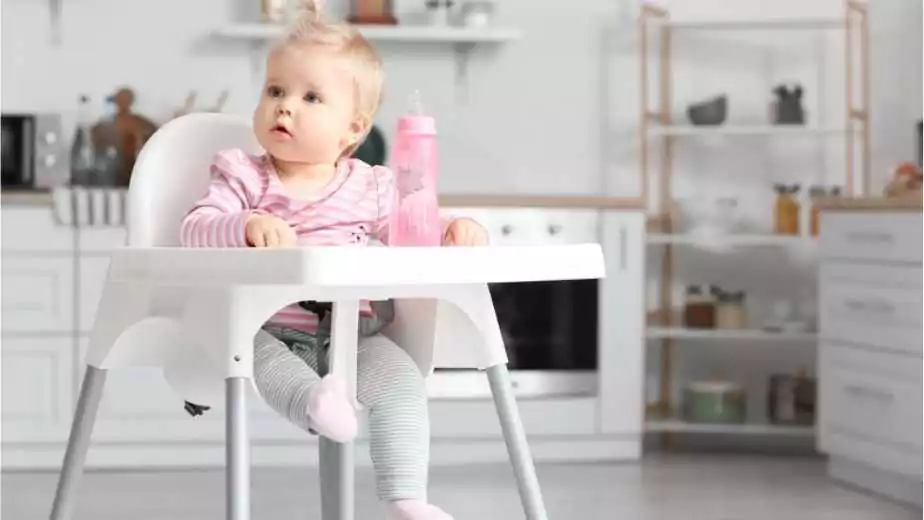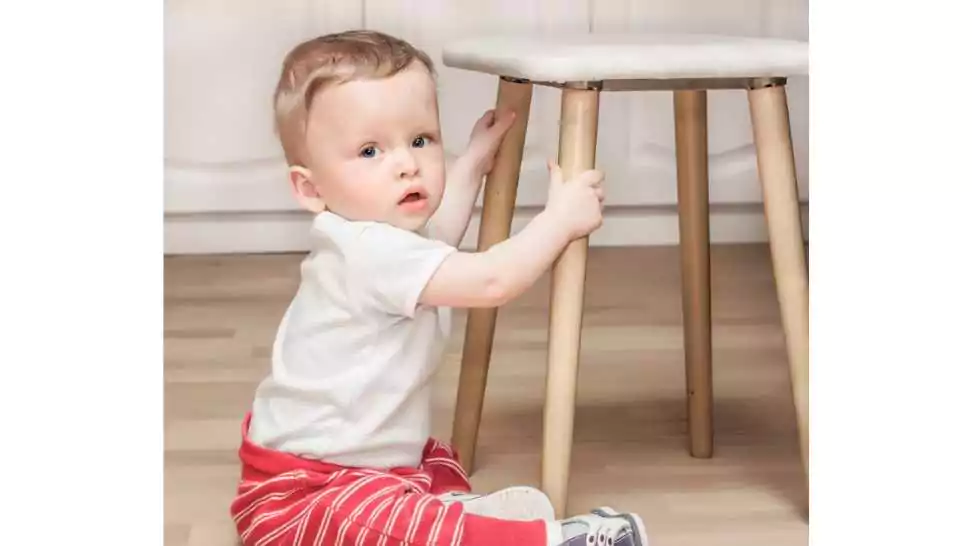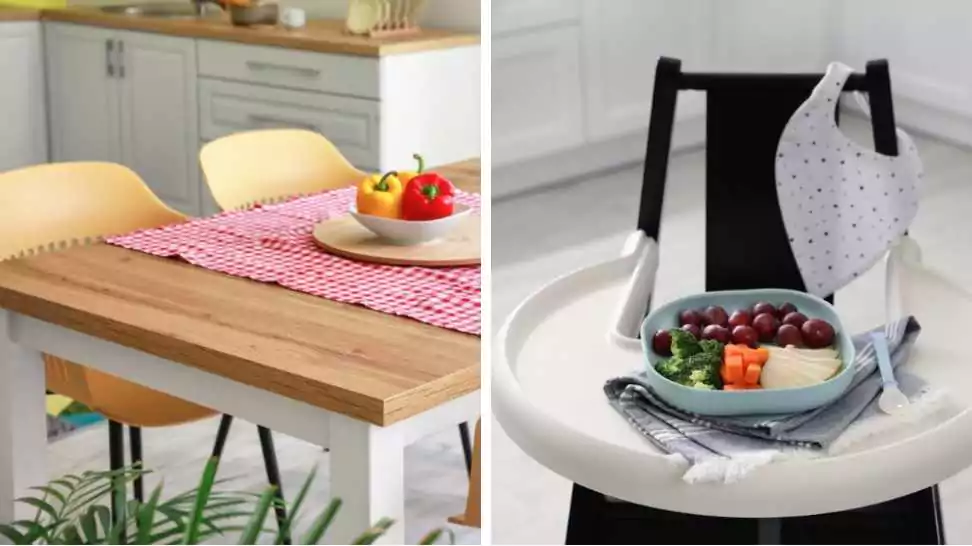When Can Baby Sit In High Chair?

Transitioning a baby to a high chair is a significant milestone in their developmental journey. It marks the beginning of a new phase where your little one starts to participate more actively in family meal times and explores the exciting world of solid foods. But, as with many aspects of parenting, it comes with its own set of questions and concerns. When can baby sit in high chair? How do you ensure it’s done safely and comfortably for your baby?
In this blog, we aim to guide parents through this important stage. We’ll delve into understanding the ideal time for babies to start using a high chair and share essential tips for safe and enjoyable meal times. Whether you’re a first-time parent or have gone through this phase before, this article will provide you with valuable insights to make this transition smooth and stress-free for both you and your baby.
1 Understanding Your Baby’s Readiness
Transitioning your baby to a high chair is not just about reaching a certain age. It’s about recognizing when your baby is developmentally ready. This section will help you understand the key signs of readiness, focusing on physical milestones and age considerations, so you can make an informed decision about when to introduce your baby to a high chair.
Physical Milestones
One of the primary indicators that your baby might be ready to sit in a high chair is their ability to sit up independently. This milestone typically occurs between 4 to 7 months of age. It’s important to wait until your baby can hold their head up and maintain a steady, upright position without support. This not only ensures their safety in a high chair but also shows that they have developed the necessary neck and core strength to start eating solids.
Another sign to look for is whether your baby shows interest in food and mealtime activities. If they are observing you eat, reaching for your food, or opening their mouth when food is offered, these are good indications that they are ready to explore eating from a high chair.

Age Considerations
While physical readiness is crucial, age also plays a role. Most babies are ready to use a high chair around 6 months of age. However, it’s essential to remember that every baby is unique, and some may be ready earlier or later than others.
Acknowledging individual developmental differences is key. If your baby hasn’t shown the physical signs of readiness by 6 months, it’s perfectly okay. Some babies take a little longer to develop the necessary strength and coordination. Always prioritize your baby’s specific developmental pace over-generalized age norms.
2 The Benefits of Using a High Chair

Using a high chair for your baby isn’t just about following a tradition; it’s about providing a safe, comfortable, and developmentally appropriate feeding environment. In this section, we will explore the multifaceted benefits of high chairs, focusing on safety, comfort, and the positive impact on your baby’s social and developmental skills.
Safety and Comfort
The primary benefit of a high chair is the safety it provides during feeding times. A well-designed high chair keeps your baby securely in place, minimizing the risk of falls or injuries. Look for chairs with sturdy construction, a secure harness (preferably a 5-point harness), and a stable base. These features ensure that even the most active babies are safely contained during meals.
Comfort is another crucial factor. A comfortable baby is more likely to engage positively during meal times. Many high chairs come with adjustable features such as reclining seats, height adjustments, and cushioned seating. These features allow the chair to grow with your baby, ensuring comfort at various stages of development.
Social and Developmental Benefits

High chairs play a significant role in your baby’s social development. By positioning your baby at the family table, they become an active participant in meal times. This inclusion fosters a sense of belonging and helps in the development of social skills. Babies learn by observing and mimicking, so being part of family meals is crucial for their social learning.
Moreover, high chairs encourage self-feeding, which is an essential milestone in developing motor skills. As babies grasp and experiment with food, they improve their hand-eye coordination and fine motor skills. The upright position in a high chair also aids in proper digestion and promotes better eating habits.
3 Choosing the Right High Chair
Selecting the right high chair is as important as deciding when to start using one. With a variety of styles and features available in the market, choosing the one that best fits your baby’s needs and your lifestyle can be overwhelming. This section aims to simplify that process by outlining the different types of high chairs and highlighting the key safety features to consider.
Types of High Chairs

High chairs come in various styles, each offering unique features:
- Adjustable High Chairs: These chairs are designed to grow with your child. They often feature adjustable seat heights, recline positions, and removable trays, making them versatile for different ages and uses.
- Portable High Chairs: Ideal for families on the go, portable high chairs are lightweight and compact. Some can be attached to regular dining chairs or tables, making them perfect for travel or dining out.
- Convertible High Chairs: Convertible high chairs are designed to serve multiple purposes. They can transform from a traditional high chair to a toddler chair or even a booster seat. This type is a great long-term investment as it adapts to your growing child’s needs.
When selecting a type, consider your space, lifestyle, and how long you plan to use the chair. Each type has its benefits, and the best choice depends on your individual family’s needs.
Safety Features to Look For
Safety should be your top priority when choosing a high chair. Here are essential safety features to look for:
- Harnesses: A good high chair should have a secure harness, preferably a 5-point harness, to keep your baby safely strapped in.
- Stability: The chair should have a wide, sturdy base to prevent tipping over. Test the chair for stability before purchasing.
- Material Quality: Choose a chair made of durable, easy-to-clean materials. Ensure there are no sharp edges or small parts that could pose a choking hazard.
- Certifications: Look for chairs that meet safety standards and have certifications from recognized organizations.
4 Preparing for the First High Chair Experience
Introducing your baby to a high chair is a milestone that’s exciting yet sometimes challenging. This section provides practical advice on how to create a positive first experience in the high chair for your baby, and how to handle some of the common challenges that might arise.
A smooth introduction to the high chair involves more than just placing your baby in it. Here are some tips to set up for success:
- Familiarize Your Baby: Let your baby explore the high chair before their first meal. Allow them to sit in it at times other than meal times, so they can get used to it.
- Create a Positive Environment: Make sure the first experiences in the high chair are happy and stress-free. You might want to start with short periods and gradually increase the time as your baby gets more comfortable.
- Ensure Comfort: Adjust the chair to fit your baby’s size, and ensure they are properly secured but not overly restricted. Comfort is key to a positive experience.
- Engage and Interact: While your baby is in the high chair, stay engaged with them. Talk, sing, or play games to associate the high chair with positive interactions.

Overcoming Common Challenges
It’s not uncommon for babies to resist or fear new experiences like sitting in a high chair. Here’s how you can address these challenges:
- Dealing with Resistance or Fear: Be patient and empathetic. If your baby shows signs of distress, take a break and try again later. Never force your baby to stay in the high chair if they are upset.
- Managing Cleanliness and Messes: Accept that feeding time can be messy. Use easy-to-clean high chair materials, place a mat under the chair for easy clean-up, and have wipes or a cloth handy. Remember, messiness is part of the learning process for your baby.
5 Wrapping Up
Introducing your baby to a high chair is an exciting and educational journey. We’ve covered how to recognize when your baby is ready, the safety and developmental advantages of high chairs, and offered advice on choosing the right one. Additionally, we’ve provided strategies for a positive first experience and dealing with challenges.
Every child is unique, and parental instincts are invaluable. Consult your paediatrician for any concerns. Remember, a high chair is more than just seating—it’s where your baby will grow, learn, and create memorable family moments. Embrace this stage with confidence and joy!
Community Q&A
About This Article
This article has been viewed 89 times.



